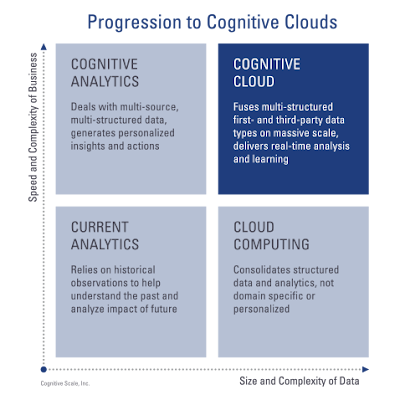Twitter Feed
Cloud Migration Part 2: Classify your data
In my first post of this series, “Cloud migration part one: An overview,” I provided a high-level summary of how enterprises should migrate applications to the cloud. In this installment,…
Could Budget Sweeps Fix Your Cybersecurity Problem?
A recent roundtable discussion in Washington, DC with Federal IT and Cyber leaders focused on the business drivers, challenges and evolving strategies around cybersecurity in government. After an opening presentation…
Cloud Migration Part 1: An Overview
Cloud Migration Part One: An Overview Business is all about efficiency and effectiveness. In today’s world, however, those twin goals almost always lead to cloud migration. This anecdotal observation…
A Personal Technology for Good Redux: Call for Code
In 2013 I had the opportunity to manage a $2M demonstration of how cloud computing could be used to support natural disasters. In that NCOIC Geospatial Community Cloud (GCC) demonstration,…
A Path to Hybrid Cloud
Cloud computing is now an operational reality across every industry. Organizations that fail to leverage this economic, operational and technology consumption model are merely consigning themselves to irrelevance. The rapid…
Human-Led Collaboration with Machines
When charged with managing large and complex efforts, an overarching project management task is risk assessment. It involves documenting the current situation, comparing it to the past, and understanding the…
Sensomorphic
240 million results are returned in 1.06 seconds (as of May 28, 2018) when you search for cloud computing in a Google search. With that much information available, and that many…
Artificial Intelligence and the Project Manager
Organizations use teams to create wealth, market share, customer service, competitive advantage, and organizational success. Effective teams accomplish their assigned end goals by engaging in collaboration as a joint learning…
Building A Collaborative Team
Recently, Harvard Business Review cited some insightful research into team behavior at 15 multinational companies. It found that although these teams tended to be large, virtual, diverse, and composed of…
Welcome the New Project Manager!
According to CIO.com, the six traits of highly effective project managers are: Be a strategic business partner who can offer higher-level strategic leadership skills, not just technical management skills, provide…
According to the IBM Institute for Business Value the market will see a rapid adoption of initial cognitive systems. The most likely candidates have moved beyond descriptive and diagnostic, predictive and routine industry-specific capabilities. 70 percent of survey respondents are currently using advanced programmatic analytics in three or more departments. In fact, the widespread adoption of cognitive systems and artificial intelligence (AI) across various industries is expected to drive worldwide revenues from nearly US$8.0 billion in 2016 to more than US$47 billion in 2020.
The analyst firm IDC predictsthat the banking, retail, healthcare and discrete manufacturing industries will generate more than 50% of all worldwide cognitive/ AI revenues in 2016. Banking and retail will each deliver nearly US$1.5 billion, while healthcare and discrete manufacturing will deliver the greatest revenue growth over the 2016-2020 forecast period, with CAGRs of 69.3% and 61.4%, respectively. Education and process manufacturing will also experience significant growth over the forecast period.
th’s ability to replicate intuitive experiences provides a number of opportunities within sentiment analysis. With its ability to understand scenes and context, it can decipher how people are feeling based off facial expressions or voice stress levels.
- Need robust and simplified data classification processes in order to more easily deliver industry and business model specific value;
- Require the implementation of information technology security controls that are driven by data value and role based access control paradigms; and
- Leverage software applications that should be developed using ISO 27034 which is a multi-part standard on specifying, designing/selecting and implementing information security controls through a set of processes integrated throughout an organization’s Systems Development Life Cycle/s (SDLC).
( Thank you. If you enjoyed this article, get free updates by email or RSS – © Copyright Kevin L. Jackson 2016)
Cloud Computing
- CPUcoin Expands CPU/GPU Power Sharing with Cudo Ventures Enterprise Network Partnership
- CPUcoin Expands CPU/GPU Power Sharing with Cudo Ventures Enterprise Network Partnership
- Route1 Announces Q2 2019 Financial Results
- CPUcoin Expands CPU/GPU Power Sharing with Cudo Ventures Enterprise Network Partnership
- ChannelAdvisor to Present at the D.A. Davidson 18th Annual Technology Conference
Cybersecurity
- Route1 Announces Q2 2019 Financial Results
- FIRST US BANCSHARES, INC. DECLARES CASH DIVIDEND
- Business Continuity Management Planning Solution Market is Expected to Grow ~ US$ 1.6 Bn by the end of 2029 - PMR
- Atos delivers Quantum-Learning-as-a-Service to Xofia to enable artificial intelligence solutions
- New Ares IoT Botnet discovered on Android OS based Set-Top Boxes



